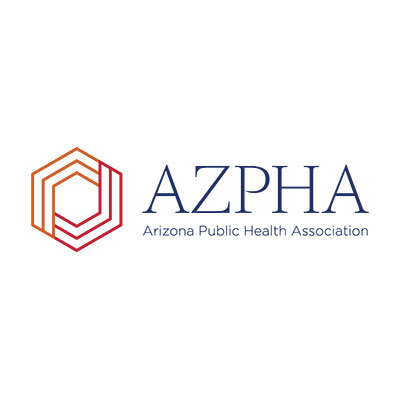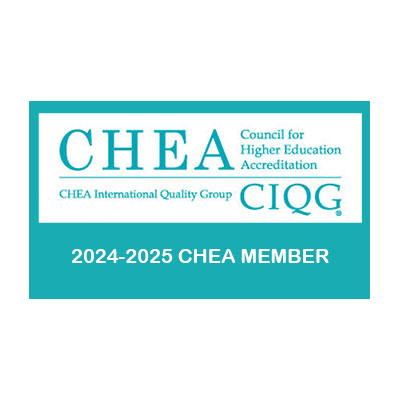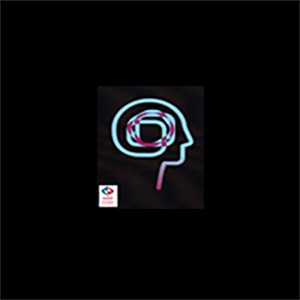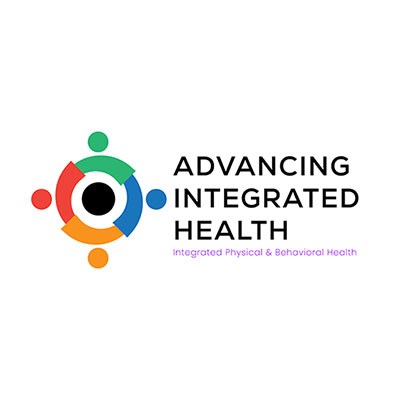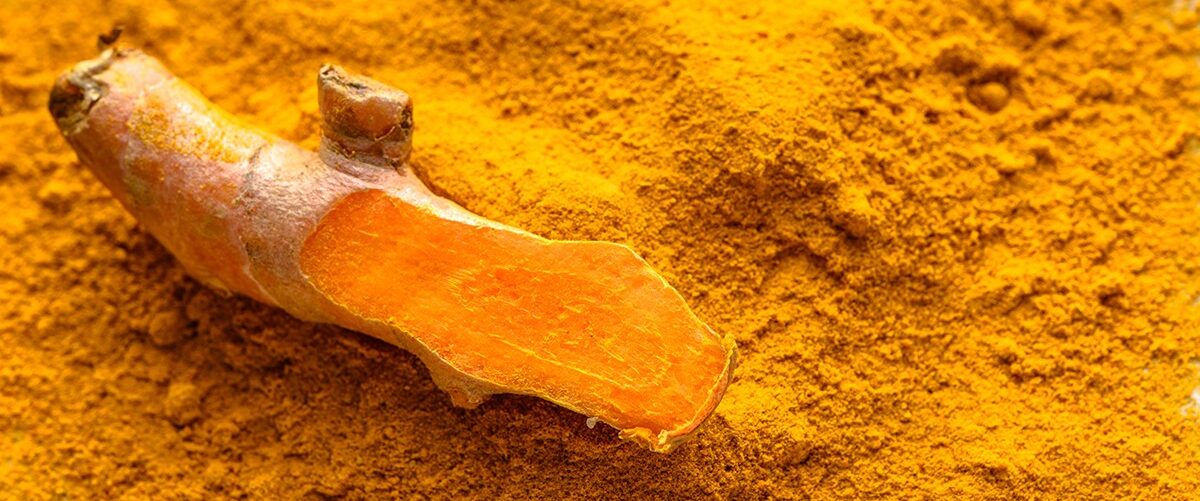
 The literature generally acknowledges an inflammation and post-traumatic stress disorder interconnection. However, the precise etiology of post-traumatic stress disorder-induced inflammation is unknown and appears complex (Hori & Kim, 2019; Quinones et al., 2020). At a basic level, inflammation is observed in many human diseases and is often defined by the body’s immune response to infection or injury, including those impairing autonomic nervous system functioning (Chen et al., 2018; Medzhitov, 2021; Quinones et al., 2020). Two psychotropic medications are evidenced in treating post-traumatic stress disorder, both of which are selective serotonin reuptake inhibitors that produce anti-inflammatory reactions (Hori & Kim, 2019).
The literature generally acknowledges an inflammation and post-traumatic stress disorder interconnection. However, the precise etiology of post-traumatic stress disorder-induced inflammation is unknown and appears complex (Hori & Kim, 2019; Quinones et al., 2020). At a basic level, inflammation is observed in many human diseases and is often defined by the body’s immune response to infection or injury, including those impairing autonomic nervous system functioning (Chen et al., 2018; Medzhitov, 2021; Quinones et al., 2020). Two psychotropic medications are evidenced in treating post-traumatic stress disorder, both of which are selective serotonin reuptake inhibitors that produce anti-inflammatory reactions (Hori & Kim, 2019).
This literature review examines the post-traumatic stress disorder inflammatory response and interventions capable of disrupting the underlying mechanism that leads to chronic inflammation in patients experiencing post-traumatic stress disorder. Specifically, this literature first seeks to understand the underlying inflammation response induced by post-traumatic stress disorder. Then it reviews the use of turmeric (curcumin) to mitigate inflammation as an alternative to prescription drugs and a complementary intervention to psychotherapy.
EBSCO, Google Scholar, and PubMedCentral were used to identify data. Keywords included post-traumatic stress disorder, PTSD, inflammation, treatment, curcumin, turmeric, biomarkers, and comorbid.
Literature Review
As detailed in the Diagnostic and Statistical Manual of Mental Disorders, post-traumatic stress disorder results from traumatic experiences (American Psychiatric Association, 2022). Specifically, the American Psychiatric Association (2022) defines post-traumatic stress disorder as exposure to death, injury, or sexual violence; intrusive, trauma-related symptoms following exposure; trauma-related avoidance behaviors; trauma-induced changes in cognition, mood, arousal, and reactivity. These symptoms impair functioning and may occur with dissociative symptoms, such as depersonalization and derealization. Inherent in the experience of many diagnosed with post-traumatic stress disorder are impairments to fear extermination, hyperarousal, executive functioning, verbal and working memory, learning difficulties, anxiety, and depression (Hori & Kim, 2019; Lee & Lee, 2018; Quinones et al., 2020).
Genetics, gender, and societal issues–like racism, sexism, homophobia, and transphobia– may play an essential role in post-traumatic stress disorder onset. Sun et al. (2020) noted that the inheritance rate of post-traumatic stress disorder ranges between 24% and 72% in twin studies. Those assigned males at birth are at lower risk than those assigned female at birth for developing post-traumatic stress disorder (Sun et al., 2020). Those identifying as Hispanic, African American or Black, and Native American Indians experience a higher prevalence of post-traumatic stress disorder (American Psychiatric Association, 2022). Additionally, the United States Department of Veteran Affairs (n.d.) identifies post-traumatic stress disorder risk among the LGBT community.
Individuals experiencing post-traumatic stress disorder are considered at high risk for mortality and comorbidities, such as Alzheimer’s disease, autoimmune disease, traumatic brain injury, cardiovascular disease, type 2 diabetes, irritable bowel syndrome, metabolic syndrome, and obesity (Cooper et al., 2023; Hori & Kim, 2019; Kim et al., 2020; Quinones et al., 2020; Sun et al., 2020). Inflammation is observed in these diseases (Cooper et al., 2023; Furman et al., 2019; Hori & Kim, 2019), which suggests that post-traumatic stress disorder enables a dysregulated immune system inflammation response (Hori & Kim, 2019; Quinones et al., 2020). The immune system’s inflammation response to harmful stimuli may partly explain this dysregulation (Chen et al., 2018; Kim et al., 2020). Furthermore, this dysregulated inflammatory response impairs fear extinction in those diagnosed with post-traumatic stress disorder (Quinones et al., 2020).
Neuroscience-Informed Considerations
Individuals experiencing post-traumatic stress disorder can misinterpret tolerable situations as threatening when faced with trauma-related stimuli, which may suggest fear network dysfunction (Quinones et al., 2020). Quinones et al. (2020) identify the medial prefrontal cortex, amygdala, and hippocampus as playing fear network roles. In animal studies, the amygdala plays a central role in fear learning, memory-based expression, and fear extinction. Kim et al. (2020) concur with Quinones that post-traumatic stress disorder’s prefrontal cortex, hippocampus, and amygdala dysregulation are associated with inflammatory response, as seen via neuroimaging.
Recognition and early treatment of adverse childhood experiences may be crucial to regulating trauma-related inflammation. Those exposed to trauma in early life may experience lasting changes to the genes regulating inflammation (Sun et al., 2020). As a result of this early life stress-inducing inflammation, cognitive, neural, and immune systems may be adversely affected (Quinones et al., 2020). It is conceivable that childhood adversities produce chronic inflammation resulting in health concerns throughout life (Hori & Kim, 2019).
Inflammation resulting from post-traumatic stress disorder remains under investigation. Quinones et al. (2020) identify the hippocampus’ role in environmental threat assessment during fear acquisition and extinction learning. These authors also point to increased amygdala activity in individuals experiencing post-traumatic stress disorder, thus likely enhancing fear recall. Quinones et al. (2020) suggest that increased medial prefrontal cortex activity during fear conditioning and decreased activity during fear extinction learning may enable post-traumatic stress disorder symptom continuation. Additionally, these authors noted the anterior cingulate cortex’s important role in emotion appraisal and regulation, and threat bias attention, which activates the sympathetic division of the autonomic nervous system (Quinones et al., 2020).
Quinones et al. (2020) and Hori and Kim (2019) align post-traumatic stress disorder-related inflammation with a heightened stress response, which they connect to changes in the hypothalamic-pituitary-adrenal (HPA) axis and autonomic nervous system. The HPA axis is crucial to homeostatic maintenance (Hori & Kim, 2019). A hypoactive HPA axis combined with a hyperactive sympathetic nervous system is evident in individuals experiencing post-traumatic stress disorder (Hori & Kim, 2019). This helps to explain the HPA axis dysregulation linked to inflammation across numerous post-traumatic stress disorder studies (Quinones et al., 2020). Additionally, inflammation suppresses homeostatic controls, which can result in dysregulation of the inflammatory response (Medzhitov, 2021).
Quinones et al. (2020) acknowledge limited evidence identifying the precise mental mechanisms inducing inflammation in post-traumatic stress disorder-diagnosed individuals. However, a growing body of research is investigating the multiple and complex ways post-traumatic stress disorder induces an inflammatory response. Research identifies a potential bidirectional model capable of maintaining post-traumatic stress disorder (Quinones et al., 2020). Evidence points to the detrimental effect of inflammation on cognition, which may contribute to post-traumatic stress disorder symptomatology. However, the research indicates chronic stress causes inflammation (Hori & Kim, 2019; Quinones et al., 2020).
Bidirectional Treatment Opportunity
Today, the primary post-traumatic stress disorder treatment is trauma counseling as soon as possible following exposure. However, individuals experiencing post-traumatic stress disorder are less likely to seek treatment (Kim et al., 2020; Quinones et al., 2020). Nevertheless, the evidence linking post-traumatic stress disorder to inflammation is significant.
Elevated interleukin-6 (IL-6) and tumor necrosis factor-alpha (TNF-a) serum levels are evident in those experiencing post-traumatic stress disorder. Elevated C-reactive protein, created by the liver, is also evident. When elevated, these biomarkers indicate inflammation (Ahmad et al., 2019; Hori & Kim, 2019; Kim et al., 2020; Quinones et al., 2020). IL-6 and TNF-a are pro-inflammatory cytokines (Sun et al., 2020) that are observed to cross the blood-brain barrier and may be implicated in inflammation-causing cognitive impairment (Hori & Kim, 2019; Kim et al., 2020). As such, C-reactive protein and cytokines like IL-6 and TNF-a may create an environment capable of sustaining post-traumatic stress disorder symptoms, thus giving way to pharmacological treatment in addition to or in place of trauma counseling for those resistant to psychotherapy (Quinones et al., 2020).
According to Hori and Kim (2019) and confirmed by the American Psychological Association (n.d.), the US Food and Drug Administration approved two selective serotonin reuptake inhibitors, sertraline (Zoloft) and paroxetine (Paxil), to treat post-traumatic stress disorder. Sun et al. (2020) suggest that selective serotonin reuptake inhibitors used following traumatic experiences can reduce long-term harm to health impairment associated with inflammation related to post-traumatic stress disorder.
The United States Department of Veteran Affairs (n.d.) and the American Psychological Association (n.d.) identify selective serotonin reuptake inhibitors and serotonin and noradrenaline reuptake inhibitors as promising psychotropic medications to treat post-traumatic stress disorder. These medications decrease neuroinflammation by reducing cytokines or regulating complex inflammatory pathways and, as such, demonstrate anti-inflammatory properties (Dionisie et al., 2021; Hori & Kim, 2019).
Additional drugs are being studied. Hori and Kim (2019) identified non-steroidal anti-inflammatory drugs, glucocorticoids, angiotensin-converting-enzyme inhibitors, angiotensin receptor blockers, and cannabis are being examined. Since pro-inflammatory cytokines are evidenced in individuals experiencing post-traumatic stress disorder (Kim et al., 2020), anti-inflammatory medications may prove helpful. Consistent among the studied drugs is their anti-inflammatory effect (Barnes, 1998; Hori & Kim, 2019; Huang et al., 2021; Kopustinskiene et al., 2022; Nguyen & Brewster, 2023; Quinones et al., 2020).
Turmeric for Post-Traumatic Stress Disorder Treatment
Psychopharmacological research regarding treating post-traumatic stress disorder-induced inflammation is limited (Hori & Kim, 2019; Quinones et al., 2020). Turmeric, however, is widely accepted for its anti-inflammatory effect (Memarzia et al., 2021) and may prove effective in treating post-traumatic stress disorder-induced inflammation due to the root’s anti-inflammatory effect on pro-inflammatory cytokines (Quinones et al., 2020). However, additional research is needed to fully understand the use of turmeric to treat post-traumatic stress disorder-induced inflammation. Herein, turmeric’s anti-inflammatory properties are examined as an alternative treatment to selective serotonin reuptake inhibitors and other prescribed off-label use medications with anti-inflammatory effects.
Turmeric is a member of the Zingiberaceae family (Memarzia et al., 2021). Historically used as a medicinal herb to treat numerous diseases in Chinese, Indian, Islamic traditional, and Ayurvedic medicines, turmeric is grown in tropical and subtropical regions and made from the plant’s rhizome (Akaberi et al., 2021; Memarzia et al., 2021; Singeltary, 2020; Yadav et al., 2015). Generally, the plant grows well in sand or clay, produces yellowish flowers, and reaches a height of three to five feet (Ahmad et al., 2019). As turmeric is available over the counter and without prescription, it is not a scheduled drug and is considered a safe dietary supplement (Smith et al., 2023).
Turmeric Pharmacodynamics
According to Lee and Lee (2018), Zhou et al. (2022), and Smith et al. (2023), the turmeric mechanism of action in post-traumatic stress disorder requires additional study. To that end, several studies sought to identify the mechanism of action. Memarzia et al. (2021) identified turmeric’s anti-inflammatory properties, including decreased histamine-induced inflammation, increased cortisol production, and improved blood circulation, contributing to inflammation reduction. Smith et al. (2023) propose cytokine signaling inhibition as the mechanism of action, supported in early research according to Yadav et al. (2015).
As mentioned, two primary pro-inflammatory cytokines and one protein are biomarkers consistently identified in individuals experiencing post-traumatic stress disorder. These biomarkers include C-reactive protein, TNF-a and IL-6. Turmeric reduces levels of these inflammatory biomarkers (Ahmad et al., 2019; Yadav et al., 2015; Zhou et al., 2022), identifying turmeric as a likely effective treatment for post-traumatic stress disorder.
Turmeric is well-positioned for post-traumatic stress disorder study in human trials, although most testing of turmeric on post-traumatic stress disorder is done on rats and mice. Turmeric testing on rats showed a reduction of anxiety and freeze-related fear behaviors by reversing serotonin dysfunction (Lee & Lee, 2018). Monsey et al. (2015) added that a diet rich in turmeric promoted the disruption of fear memories in rates. Other rat studies provided evidence of reduced serotonin in the hippocampus and amygdala and demonstrated the resolution of post-traumatic stress (Lee & Lee, 2018; Nakahara, 2021). Furthermore, Lopresti (2022) observed turmeric’s efficacy in depression improvement in mice, resulting from the supplement’s serotonin stimulation effect. Aubry et al. (2019) observed turmeric’s helpfulness in improving resilience in mice. Although further studies are needed, turmeric has the potential to positively influence the brain regions of humans experiencing post-traumatic stress disorder.
Across the literature, no single effective dose was identified, and turmeric is generally considered safe, although a maximum safe dose requires identification (Smith et al., 2019). Ahmad et al.(2019) reported no genotoxicity. However, Smith et al. (2023) disagreed. They noted possible genetic risk factors associated with turmeric use by Caucasians, females assigned at birth, and those experiencing human leukocyte antigen (HLA) type b. Singletary (2020) generally recommends dose and use caution resulting from a need for additional clinical information regarding dose safety and drug interactions. As mentioned, those assigned female at birth are at a higher risk for post-traumatic stress disorder. As such, using turmeric to treat post-traumatic stress disorder may further benefit those assigned female at birth.
Turmeric Pharmacokinetics
Across the literature, turmeric demonstrates poor oral absorption due to low water solubility. Singletary (2020) identified “poor water solubility, low intestinal absorption, and rapid metabolic degradation” as turmeric absorption inhibitors. To enhance turmeric absorption, turmeric is often encapsulated with piperine (black pepper), ginger, or oil (Dei Cas & Ghidoni, 2019; Memarzia et al., 2021; Singletary, 2020; Smith et al., 2023; Zhou et al., 2022). However, Ahmad et al. (2019) noted increased absorption of turmeric when administered intravenously.
Once orally administered, turmeric first enters the stomach and remains stable due to its ability to withstand acidic conditions. From the stomach, turmeric enters the gastrointestinal tract, where it remains for approximately 30 minutes with low absorption. Then, it moves to the liver for metabolization before entering the intestinal lumen for excretion via the colon (Dei Cas & Ghidoni, 2019; Memarzia et al., 2021).
Turmeric Pharmacology
The main component of turmeric is curcumin. The primary bioactive ingredients include diarylheptanoids (curcuminoids), bisdemethoxycurcumin, demethoxycurcumin, and diferuloylmethane. Still, more bioactive plant components are evident (Lee & Lee, 2018; Memarzia et al., 2021; Singletary, 2020). The primary component, curcumin, known chemically as 1,7-bis(4-hydroxy-3-methoxyphenyl)-1, 6-heptadiene-3, 5-dione (Ahmad et al., 2019; Memarzia et al., 2021; Peng et al., 2021), is evidenced in producing neuroprotective, anti-inflammatory, and immunomodulatory effects (Ahmad et al., 2019; Akaberi et al., 2021; Lee & Lee, 2018; Memarzia et al., 2021; Zhou et al., 2022). These anti-inflammatory effects inform the potential for using turmeric to treat post-traumatic stress disorder-related inflammation (Mavaddatiyan et al., 2022).
Turmeric Pharmacotherapeutics
Across the history of therapeutic use, Tumeric has demonstrated effectiveness in the treatment of heart disease, arthritis, cancer, gastrointestinal disorder, liver dysfunction, urinary tract infections, allergies, metabolic syndrome, diabetes, pain, wound healing, inflammation, and immune dysregulation disorders (Ahmad et al., 2019; Dehzad et al., 2023; Dei Cas & Ghidoni, 2019; Memarzia et al., 2021; Singletary, 2020; Yadav et al., 2015; Zhou et al., 2022). Additionally, turmeric effectively treats neurological and psychiatric disorders like Parkinson’s disease, Alzheimer’s disease, mood disorders, and memory disorders, neuroinflammation (Ahmad et al., 2019; Akaberi et al., 2021; Lee & Lee, 2018; Nakahara, 2021). As many of these illnesses demonstrate inflammation, turmeric will likely produce anti-inflammatory effects in those experiencing post-traumatic stress disorder.
Turmeric Toxicology
Generally, the United States Food and Drug Administration considers turmeric safe (Memarzia et al., 2021; “Turmeric,” 2022). Potential side effects include itching, rash, tongue redness, headache, tachycardia, flatulence, diarrhea, nausea, yellow stool, abdominal pain, and constipation (Ahmad et al., 2019; Memarzia et al., 2021; “Turmeric,” 2022). Smith et al. (2023) observed liver injury in a single case which resolved with discontinuation. Although considered safe during pregnancy (Ahmad et al., 2019), assessment of use requires close attention and is not suggested for use during breastfeeding since curcumin restricts milk production (“Turmeric,” 2022). Ahmad et al. (2019) also noted the potential for turmeric to alter other medications an individual uses. As such, clinical pharmacist consultation is recommended.
Conclusion
Turmeric brings to bear a body of historical use regarding the efficacy of its primary component, curcumin, to relieve symptoms associated with many diseases. Although clinical trials provide an opportunity for the specific identification of the practical and safe dose in humans, animal models provide a pathway to understanding turmeric’s effect on the neurological systems implicated in post-traumatic stress disorder. Considering the impact of turmeric on several post-traumatic stress disorder risk populations and comorbidities, its fast-acting impact compared to selective serotonin reuptake inhibitors, and its general availability in the market, turmeric may serve as the preferred complementary intervention to psychotherapy since it demonstrates the least harmful side effects for the majority of patients. However, further research is required to precisely understand the effect of turmeric on genetics, the fear network, the hypothalamic-pituitary-adrenal (HPA) axis, and the autonomic nervous system, in addition to the biomarkers implicated in post-traumatic stress disorder.
References
Ahmad, R. S., Hussain, M. B., Sultan, M. T., Arshad, M. S., Waheed, M., Shariati, M. A., Plygun, S., & Hashempur, M. H. (2019). Biochemistry, safety, pharmacological activities, and clinical applications of turmeric: A mechanistic review. Evidence-based Complementary and Alternative Medicine. https://doi.org/10.1155/2020/7656919
Akaberi, M., Sahebkar, A., & Emami, S. A. (2021). Turmeric and curcumin: From traditional to modern medicine. Advances in Experimental Medicine and Biology, 1291, 15–39. https://doi.org/10.1007/978-3-030-56153-6_2
American Psychiatric Association. (2022). Diagnostic and statistical manual of mental disorders (5th ed., text rev.). https://doi.org/10.1176/appi.books.9780890425787
American Psychological Association (n.d.). Medications for PTSD. Clinical Practice Guideline for the Treatment of Posttraumatic Stress Disorder. Retrieved on April 24, 2023, from https://www.apa.org/ptsd-guideline/treatments/medications
Aubry, A. V., Khandaker, H., Ravenelle, R., Grunfeld, I. S., Bonnefil, V., Chan, K. L., Cathomas, F., Liu, J., Schafe, G. E., & Burghardt, N. S. (2019). A diet enriched with curcumin promotes resilience to chronic social defeat stress. Neuropsychopharmacology, 44(4), 733–742. https://doi.org/10.1038/s41386-018-0295-2
Barnes P. J. (1998). Anti-inflammatory actions of glucocorticoids: molecular mechanisms. Clinical science, 94(6), 557–572. https://doi.org/10.1042/cs0940557
Chen, L., Deng, H., Cui, H., Fang, J., Zuo, Z., Deng, J., Li, Y., Wang, X., & Zhao, L. (2018). Inflammatory responses and inflammation-associated diseases in organs. Oncotarget, 9(6), 7204-7218. https://doi.org/10.18632/oncotarget.23208
Cooper, J., Pastorello, Y., & Slevin, M. (2023). A meta-analysis investigating the relationship between inflammation in autoimmune disease, elevated CRP, and the risk of dementia. Frontiers in Immunology. https://doi.org/10.3389/fimmu.2023.1087571
Dehzad, M. J., Ghalandari, H., Nouri, M., & Askarpour, M. (2023). Antioxidant and anti-inflammatory effects of curcumin/turmeric supplementation in adults: A GRADE-assessed systematic review and dose-response meta-analysis of randomized controlled trials. Cytokine, 164, 156144. https://doi.org/10.1016/j.cyto.2023.156144
Dei Cas, M., & Ghidoni, R. (2019). Dietary curcumin: Correlation between bioavailability and health potential. Nutrients, 11(9), 2147. https://doi.org/10.3390/nu11092147
Dionisie, V., Filip, G. A., Manea, M. C., Manea, M., & Riga, S. (2021). The anti-inflammatory role of SSRI and SNRI in the treatment of depression: A review of human and rodent research studies. Inflammopharmacology, 29(1), 75–90. https://doi.org/10.1007/s10787-020-00777-5
Furman, D., Campisi, J., Verdin, E., Carrera-Bastos, P., Targ, S., Franceschi, C., Ferrucci, L., Gilroy, D. W., Fasano, A., Miller, G. W., Miller, A. H., Mantovani, A., Weyand, C. M., Barzilai, N., Goronzy, J. J., Rando, T. A., Effros, R. B., Lucia, A., Kleinstreuer, N., & Slavich, G. M. (2019). Chronic inflammation in the etiology of disease across the life span. Nature medicine, 25(12), 1822. https://doi.org/10.1038/s41591-019-0675-0
Hori, H. & Kim, Y. (2019). Inflammation and post-traumatic stress disorder. Psychiatry Clinical Neurosciences, 73, 143–153. https://doi.org/10.1111/pcn.12820
Huang, L., Chen, Z., Ni, L., Chen, L., Zhou, C., Gao, C., Wu, X., Hua, L., Huang, X., Cui, X., Tian, Y., Zhang, Z., & Zhan, Q. (2021). Impact of angiotensin-converting enzyme inhibitors and angiotensin receptor blockers on the inflammatory response and viral clearance in COVID-19 patients. Frontiers in Cardiovascular Medicine, 8. https://doi.org/10.3389/fcvm.2021.710946
Kim, T. D., Lee, S., & Yoon, S. (2020). Inflammation in post-traumatic stress disorder (PTSD): A Review of potential correlates of PTSD with a neurological perspective. Antioxidants, 9(2), 107. https://doi.org/10.3390/antiox9020107
Kopustinskiene, D. M., Masteikova, R., Lazauskas, R., & Bernatoniene, J. (2022). Cannabis sativa L. bioactive compounds and their protective role in oxidative stress and inflammation. Antioxidants, 11(4), 660. https://doi.org/10.3390/antiox11040660
Lee, B., & Lee, H. (2018). Systemic administration of curcumin affect anxiety-related behaviors in a rat model of posttraumatic stress disorder via activation of serotonergic systems. Evidence-based Complementary and Alternative Medicine. https://doi.org/10.1155/2018/9041309
Lopresti, A.L. (2022). Potential role of curcumin for the treatment of major depressive disorder. CNS Drugs 36, 123–141. https://doi.org/10.1007/s40263-022-00901-9
Mavaddatiyan, L., Khezri, S., & Abtahi Froushani, S. M. (2022). Effect of curcumin on cortisol, catalase and nerve growth factor expression level in animal model of induced multiple sclerosis. Journal of Gurgaon University Medical Sciences, 24(2). https://doaj.org/article/684c998f1a9f46dd8a3d3648212d1cb9
Medzhitov, R. (2021). The spectrum of inflammatory responses. Science. https://doi.org/abi5200
Memarzia, A., Khazdair, M. R., Behrouz, S., Gholamnezhad, Z., Jafarnezhad, M., Saadat, S., & Boskabady, M. H. (2021). Experimental and clinical reports on anti-inflammatory, antioxidant, and immunomodulatory effects of Curcuma longa and curcumin, an updated and comprehensive review. BioFactors, 47(3), 311–350. https://doi.org/10.1002/biof.1716
Monsey, M. S., Gerhard, D. M., Boyle, L. M., Briones, M. A., Seligsohn, M., & Schafe, G. E. (2015). A diet enriched with curcumin impairs newly acquired and reactivated fear memories. Neuropsychopharmacology, 40(5), 1278–1288. https://doi.org/10.1038/npp.2014.315
Nakahara, J., Masubuchi, Y., Takashima, K., Takahashi, Y., Ichikawa, R., Nakao, T., Koyanagi, M., Maronpot, R. R., Yoshida, T., Hayashi, S. M., & Shibutani, M. (2021). Continuous exposure to amorphous formula of curcumin from the developmental stage facilitates anti-anxiety-like behavior and fear-extinction learning in rats. Nutrition Research, 85, 99–118. https://doi.org/10.1016/j.nutres.2020.10.007
Nguyen, P., & Brewster, A. L. (2023). Who Dunnit? Angiotensin, inflammation, or complement: Unresolved. Epilepsy Currents. https://doi.org/10.1177/15357597221150057
Peng, Y., Ao, M., Dong, B., Jiang, Y., Yu, L., Chen, Z., Hu, C., & Xu, R. (2021). Anti-inflammatory effects of curcumin in the inflammatory diseases: Status, limitations and countermeasures. Drug Design, Development and Therapy, 15, 4503–4525. https://doi.org/10.2147/DDDT.S327378
Quinones, M.M., Gallegos, A.M., Lin, F.V., & Heffner, K (2020). Dysregulation of inflammation, neurobiology, and cognitive function in PTSD: An integrative review. Cognitive, Affective & Behavioral Neuroscience 20, 455–480. https://doi.org/10.3758/s13415-020-00782-9
Singletary, K. (2020). Turmeric: Potential health benefits. Nutrition Today 55(1), 45–56. DOI: 10.1097/NT.0000000000000392
Smith, D. N., Pungwe, P., Comer, L. L., Ajayi, T. A., & Suarez, M. G. (2023). Turmeric-associated liver injury: A rare case of drug-induced liver injury. Cureus, 15(3).
Sun, Y., Qu, Y., & Zhu, J. (2020). The relationship between inflammation and post-traumatic distress disorder. Frontiers in Psychiatry, 12. https://doi.org/10.3389/fpsyt.2021.707543
Turmeric. (2022, March 21). In Drugs and Lactation Database (LactMed®). National Institute of Child Health and Human Development. Retrieved on April 38, 2023, from https://www.ncbi.nlm.nih.gov/books/NBK501846/
United States Department of Veteran Affairs (n.d.). PTSD: National Center for PTSD. Retrieved on April 23, 2023, from https://www.ptsd.va.gov/professional/treat/specific/trauma_discrimination_lgbtq.asp
Yadav, R., Jee, B., & Awasthi, S. K. (2015). Curcumin suppresses the production of pro-inflammatory cytokine interleukin-18 in lipopolysaccharide stimulated murine macrophage-like cells. Indian Journal of Clinical Biochemistry, 30(1), 109–112. https://doi.org/10.1007/s12291-014-0452-2
Zhou, X., Münch, G., Wohlmuth, H., Afzal, S., Kao, M., Low, M., Leach, D., & Li, C. G. (2022). Synergistic inhibition of pro-inflammatory pathways by ginger and turmeric extracts in rAW 264.7 cells. Frontiers in Pharmacology, 13. https://doi.org/10.3389/fphar.2022.818166


















